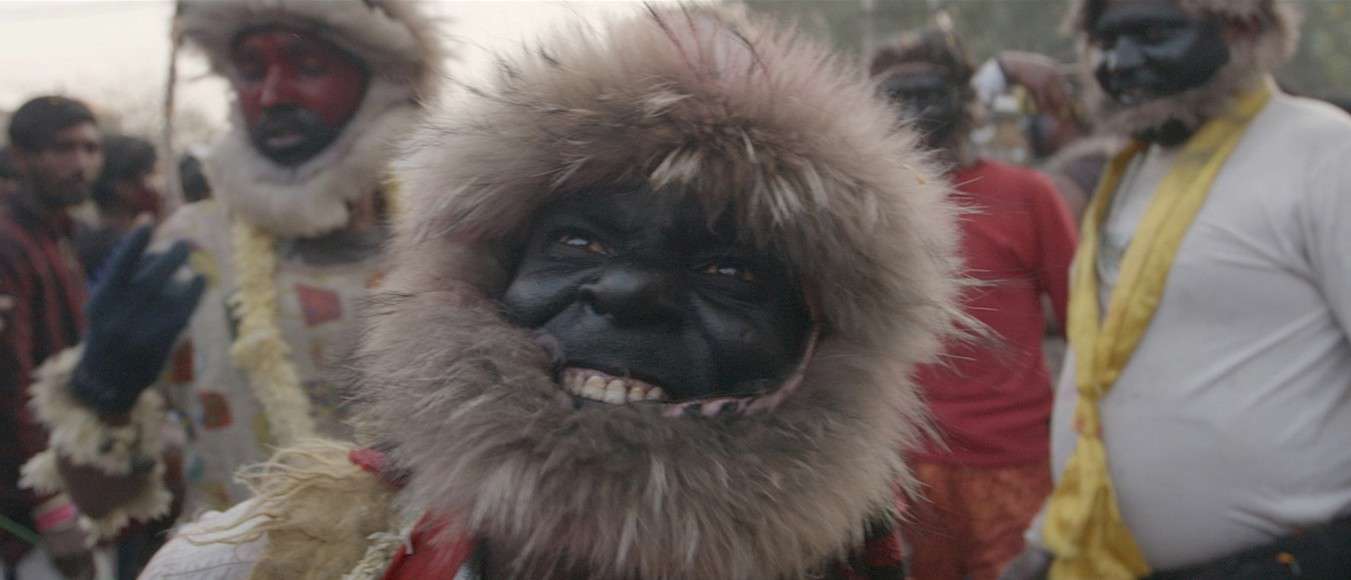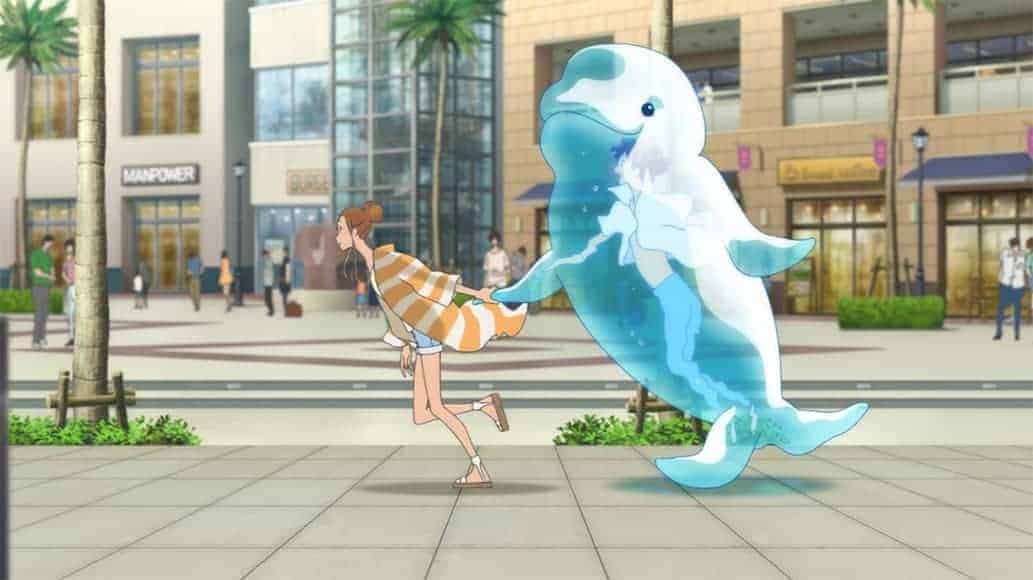Sequel to the animated film “Seoul Station”, also by Yeon Sang-ho, “Train to Busan” is the film with the most admissions in South Korea for 2016, with more than 11.5 million. This number places it in the 11th position of the all-time list with admissions in the country, despite the fact that it is one of the very few South Korean productions with zombies.
Buy This Title

In contrast to the general depiction that has zombies portrayed as very slow, the ones in “Train to Busan” follow the rules of Danny Boyle's “28 Days Later” and are actually very quick. This trait, along with their usual relentlessness and the setting of the train, which does not give much space to avoid them, results in one of their most onerous depictions ever. Furthermore, the scenes where they crash into each other as they are speeding towards their prey, are utterly horrific, although the one that truly stands apart occurs when they form a mass of some sorts in order to stop a moving train. Even the fact that their sole flaw is that they cannot see in the darkness heightens this sense of danger they emit, since the only way for the passengers to pass by them is in complete darkness.
Humans are scarier and this “trait” is chiefly represented by Yong-suk and his “entourage”, who are willing to let everybody else die instead of allowing them to come to their “safe place”, one of the wagons. The cruelty of this scene is truly shocking, and becomes even more intense after some of them manage to enter the specific wagon, only to be kicked out after awhile, despite the fact that they have children with them. Furthermore, Yong-suk gives one of the ugliest images ever attached to human nature, as he is a man willing to let everybody else be killed, or even kill them himself, in order to save his hide. The fact that he almost succeeds, through a number of episodes involving him feeding people who try to help him to the zombies, is at least as shocking as watching the zombies attack.

Despite the extreme concept, Yeon manages to present a number of social messages, chiefly regarding human nature through allegories. The most obvious one is that of the contemporary world, where ambition is the most crucial ability in order for someone to ascend the ladder of the socioeconomic environment. The zombie infestation serves as the allegory of this world, where dog-eat-dog is the rule. The separation of the passengers in the train, which leaves some safe in a protected wagon and the rest struggling to survive, is an allegory regarding the gap between the rich and the poor. Additionally, the former are portrayed as people willing to do anything to protect their safe environment, without caring the least for the lives of the have-nots. The fact that the protagonists have to give every inch of their power and even self-sacrifice to survive is an allegory of the class rebellion, as the only way to achieve their goal of equality. Lastly, a message is presented when Seok-woo closes the door on Sang-hwa; people may have the instinct of self-preservation that extends to their family members, but they are a long way from extending it to their neighbors and other people in general.
Zombie films frequently feature comic moments, particularly through the way the creatures move and act. “Train to Busan”, however, takes it a step forward, as the humor in the movie actually derives from the human characters. This trait is mainly achieved through Ma Dong-seok's character, Sang-hwa. Ma manages to present a number of comedic episodes and his physique (he used to be an MMA trainer) makes his “bloopers” utterly hilarious. However, the funniest moment in the film, and the one that stands as a clear paradigm of the nature of the movie's humor, features Seok-woo. As he calls his mother to see if she is well, she is zombified, but still whines about her daughter-in-law. Overall, Yeon Sang-ho's use of humor does wonders for the film, as hilarious scenes frequently substitute the agonizing ones, keeping the audience's attention from wavering even for a minute.
The overwhelming majority of zombie movies include a number of clichés. The first one dictates that a team of humans tries to survive against a zombie outbreak. In “Train to Busan”, however, the most significant danger derives not from the zombies, but from other humans who are willing to kill everybody else in order to save their hide. The second one has this team constantly moving in cities and towns as they search for solace and survival. In “Train to Busan”, the action is set mostly on a train, radically changing the usual setting of the genre. The third one involves zombies, who are usually slow and actually very easy to deal with. In contrast, the zombies in this film are very fast and even seem to share a collective mind, as it is presented in the scene where all together they try to stop the wagon. Furthermore, the lack of sound, usually presented as the most common way to avoid them, is replaced by a lack of light. The way the zombies act also strips the film of the usual humor frequently associated with their slowness, and in that fashion, heightens the aspect of agony in the film.
The acting element in zombie movies is usually on a very low level, since the genre tends to focus on the action and the creatures rather than the actual actors. However, Yeon Sang-ho used a different tactic, since the film also features much drama and the occasional comedy, which demands good acting, at least to some degree. In that fashion, Gong-you is quite good as Seok-woo, the detached executive that has been ignoring his family for years and now has to make up for it. The fact that he is not completely good, particularly when his and his daughter's survival are at stake, adds another interesting layer in his character, and he is very convincing in that aspect. Ma Dong-seok as Kim Soo-an holds the most entertaining role in the film, being great in the dramatic, comic, and action sequences, as his presence always seems to elevate the film. Kim Su-an as Seok-woo's kid daughter is also great, in a very mature role for a child that avoids the usual standards of similar roles that just demand cuteness. Kim eui-sung as Yong-suk is impressive as the definite villain of the film, as he portrays a truly despicable human being that is actually even worse than the zombies.
Given the speed the film moves, it would be very easy for it to become an action flick, simply jumping from one action scene to another. However, Yeon Sang-ho's direction and script prevents this outcome by inducing a number of elements. Drama (and occasionally melodrama) is one of them, as is the change in Seok-woo's attitude, a genuinely humanistic concept. The elaborate script, which retains the agony as it switches genres, is another factor, as is the case with the injections of humor, which occasionally occur through chaos. Both of the ending sequences also move in that direction, with the dramatic element being the dominant one, instead of action.
Yeon Sang-ho's previous works were mostly animated. In that fashion, he tried to implement the animation aesthetics, particularly regarding the action scenes, in “Train To Busan”. With the help of visual effects supervisor Jung Hwang-su, he succeeded to the fullest, as the action in the film is very close to that of his animations. Starting with the appearance and the movement of zombies, continuing to the death of people in their hands and the various scenes involving trains, the special effects are magnificent in their hyperbole. Along with some show-stopping techniques in crucial scenes, “Train to Busan” is an audiovisual masterpiece.

Using the train as the main setting of a zombie film was a brilliant idea, particularly due to the claustrophobic feeling emitted from the hunting through the wagons. Yeon capitulated on the concept, heightening the tension continuously, as the passengers realize that eventually they will reach the edge of the train where there is no way out. In that fashion, he manages to retain the agony for the whole of the trip. Furthermore, he used an aspect ratio of 1:85.1 instead of the usual widescreen 2.35:1, thus downsizing the frame and stressing the claustrophobia even more. The fact that the protagonists progress to reach their loved ones through the zombie-infested train is very slow also adds to the sentiment.
One of the most important aspects of an action film is its editing. Yang Ji-mo does a great job in “Train to Busan”, as he retains a steady and fast rhythm throughout its duration, while he occasionally inserts footage that help the film become more impressive. Two sequences truly highlight his work. The first one includes the scenes where the fighting in the light repeatedly gives its place to the ones in the darkness, where the zombies stay still, and vice versa. The second sequence is the one that switches from Kim-soo being killed as he tries to hold off the creatures, while the rest of the “gang” try to enter the safe wagon, against the wills of those already in it. Furthermore, by frequently switching action scenes with non-action ones in an almost equal ratio, Yang keeps the film from either becoming an action flick or a melodrama, while the comic breaks enhance the entertaining aspect.
“Train To Busan” is definitely a blockbuster, but its depth, artistry and acting place it on a higher level than most films of the category.
The film screened during Five Flavours Film Festival, in Warsaw















